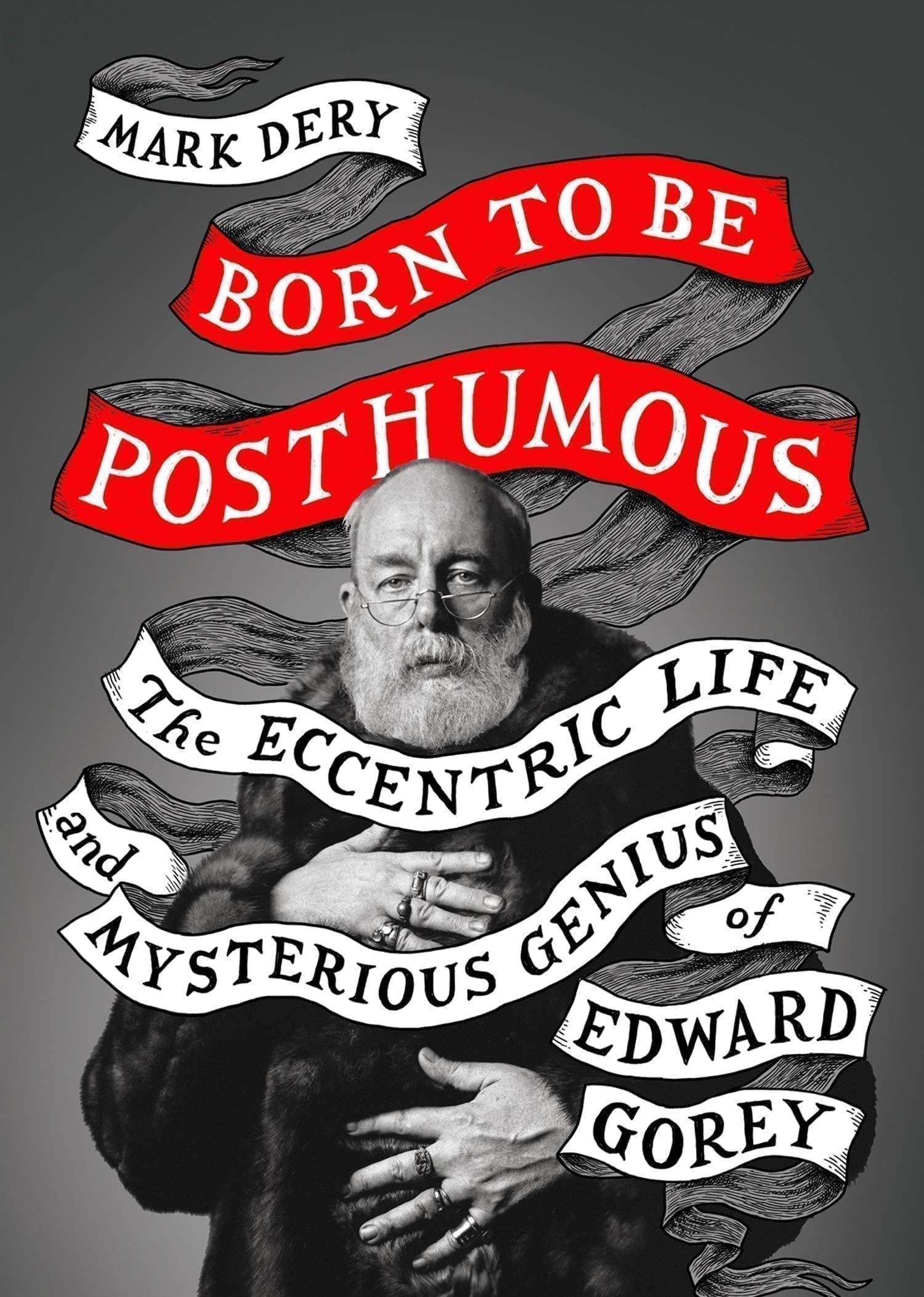Born to be Posthumous is the definitive biography of the artist, writer, playwright, and legendary eccentric Edward Gorey, master of gothic nonsense and macabre camp.
Edward Gorey (1925-2000) was born to be posthumous. His poisonously funny picture books – deadpan accounts of murder, disaster, and discreet depravity, narrated in the world-weary tone of gay British novelists of the 1920’s like Ronald Firbank and Ivy Compton-Burnett – established him as the master of morbid whimsy. Told in verse and illustrated in a style that crosses Surrealism with the Victorian true-crime gazette, his deliciously sinister little books have influenced Goreyphiles from Tim Burton to Neil Gaiman to Alison Bechdel to Lemony Snicket. Some even call him the Grandfather of Goth.
We know him as the man who published over a hundred books under his own name (or noms de plume) and illustrated works by T.S. Eliot, Edward Lear, John Bellairs, Samuel Beckett, Charles Dickens, Hilaire Belloc, John Updike, Muriel Spark, and Bram Stoker, to name but a few. Who lived with over 20,000 books and as many as six cats. Who roomed with Frank O’Hara at Harvard. Who was known–in the late 1940’s, no less–to traipse around in full-length fur coats, clanking bracelets, and an Edwardian beard. An eccentric, a gregarious recluse, an enigmatic auteur of deadpan black humor.
But who was the real Edward Gorey behind the Oscar Wildean pose and the costumes a New Yorker called “half bongo-drum beatnik, half fin-de-siècle dandy”? A deeply complicated and conflicted individual, it turns out; a man whose disquieting art and darkly hilarious persona both reflected and concealed a secret side.
Based on newly uncovered correspondence and interviews with personalities as diverse as John Ashbery, Donald Hall, Lemony Snicket, and Anna Sui, Born to Be Posthumous draws back the curtain on the eccentric genius and mysterious life of Edward Gorey.
One of the Best Books of the Year: NPR, The Guardian, Boston Globe, Paste, Mental Floss, San Francisco Chronicle
Praise for Born to Be Posthumous:
“As a perfervid Goreyphile, I was a bit leery of a biography undertaking to spell out the details of his life. Did I really want to have the mystery solved? But Mark Dery drags the pond to revelatory result, contextualizing and analyzing Gorey, plunging into his obsessions, dissecting his sexuality, and even examining the philosophical import of nonsense while somehow managing to leave the central enigma radiantly intact. This is an absolutely riveting book about an utterly sui generis subject.” – Alison Bechdel, author of Fun Home
“The best biographies are the result of a perfect match between author and subject, and it’s relatively rare when the two align perfectly. But that’s the case with Born to Be Posthumous–Dery shares Gorey’s arch sense of humor, and shows real sympathy for his sui generis outlook and aesthetics. Dery’s book is smart, exhaustive, and an absolute joy to read… the biography [Gorey] has long deserved.” – NPR
“Smart and entertaining… brings us closer than ever to understanding a man devoted to enigmas.” – Washington Post
“Edward Gorey has been granted the most remarkable biography, one I believe he could have lived with. What was the likelihood that this singular genius could be restored, with such compassion and grace, within his whole context: Balanchine, surrealism, Frank O’Hara, Lady Murasaki, et al? This is a Dery Gorey book.” – Jonathan Lethem, author of The Feral Detective
“Provocative… Dery makes a convincing case that Gorey was the true godfather of Goth, inspiring a generation of pop culture memento mori, from the IMAX-scale nightmares of Tim Burton… to the travails of Lemony Snicket… Dery has set the standard for a comprehensive appraisal of his legacy.” – San Francisco Chronicle
“Gorey has found a superb biographer in Mark Dery… Some enigmas aren’t meant to be solved–but they can be usefully illuminated. That’s just what Dery does in this excellent book.” – Seattle Times
“Edward Gorey’s ardent admirers have long known there is something about his work one can’t quite pin down. Past all reason, Mark Dery has pinned it down. A genius book about a bookish genius.” – Daniel Handler, author of A Series of Unfortunate Events
“That sense of our ultimate aloneness in the world makes Gorey’s books as haunting as they are odd. Dery’s affectionate tribute to an artist who was ‘incomparably, unimprovably himself’ also shows Gorey evoking in his work feelings of alienation, longing, and dread that are perhaps more common than we like to admit.” – Boston Globe
“Mark Dery’s deep, clear-eyed biography of Gorey is so welcome. He pulls at the disparate threads running through Gorey’s art… and unearths the artist’s gay identity.” – NPR

